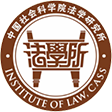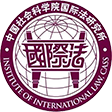Recent Revision of the Securities Act and Its Implications
 字号:
字号:小
中
大
Good afternoon everyone. I'm very glad and deeply honored to be here to make this presentation. Thanks to Prof. Liebman for giving me this opportunity. Thanks to Paulette for all the arrangement. And thanks to you all for your presence. My topic is Recent Revision of the Securities Act and Its Implications.
As some of you may have noted, at the end of the year 2005, the National People's Congress of China approved a revision of the Securities Act, which was by far the most drastic revision since its enactment in 1998. This revision has had and will continue to have wide-spread and far-reaching influence nationwide. To have a better understanding, first let's have a brief review of the development of the Chinese securities market and securities regulation.
I. A Brief History of China' Securities Market and Securities Regulation
After the 1949 revolution and the foundation of the People's Republic, there was a short period of accommodation for securities market as a channel of financing. Stock exchanges were established in Beijing and Tianjin; government bonds as well as stock were issued. However, with planned economy finally took the dominant position, securities and securities market were completely eliminated by the late 1950's.
It was not until 1980, shortly after the adoption of the reform and opening policy, that stock reappeared in China. A manufacturing company in Northeast China's Liaoning Province became the first issuer in that year. After that, a few other companies also issued their own stock. However, shareholders were unable to trade their shares since there was neither stock exchange nor over-the-counter market in existence at that time.
In September 1986, the first stock trading counter was established in Shanghai. In November of the same year, when Mr. John Phelan, former Chairman of the NYSE, visited China and met with Deng Xiaoping, Deng gave him a special gift, a stock certificate with a face value of RMB 50 Yuan issued by a Shanghai company. Mr. Phelan, as a sophisticated investor, immediately went to the trading counter, registered the transfer, and safely brought the certificate back to the states. As far as I know this certificate is still on file with the NYSE today.
This episode sent an unmistakable signal of China's resolution to develop its capital market. Subsequently, Shanghai Stock Exchange and Shenzhen Stock Exchange were established in 1990 and 1991, respectively. The year of 1992 witnessed the birth a national regulator, China Securities Regulatory Commission, or CSRC. This organization was largely modeled on the SEC, with Mr. Gao Xiqing, a JD from Duke, serving as the first Chief Counsel and head of the department of public offering. In 1993, the State Council adopted the Provisional Regulations on the Issuance and Transaction of Stock, providing the highest level of legal rules at that time for the regulation of the securities market, in the absence of any statute.
In 1998, after several years' drafting with heated debate, the Securities Act was finally passed by the National People's Congress. This was a milestone event in the development of China's securities market. For the first time, issuance and transactions of securities, rights and obligations of investors and market participants, as well as the powers and authorities of the securities regulator, were clearly and comprehensively set out by a statute. This Act opened a new era in China's securities regulation.
II. Two Major Defects in the 1998 Act
However, limited by China's status as both an emerging and a transforming economy, as well as by the insufficient experience in securities regulation, the 1998 Act is far from perfect. Criticisms can be raised from different perspectives, but I would like to start by asking an underlying question, because in my opinion, this question and its answer is so important in explaining the deficiency in the original Act of 1998 and the reason for its latest revision in 2005.
The question is: what are the essential functions of securities market and securities regulation?
Answers might be different. But I guess we could agree that two of the major functions of securities market are: (1) for companies to raise capital; and (2) for investors to get return. It follows that securities law should have proper regulation of listed companies, not so rigid as to overburden their capital raising; and meanwhile should have adequate protections for investors, to ensure that securities market does not become a one-way drive for looters.
With this understanding in mind, we could find that the original Securities Act of 1998 had two big problems, one is over-regulation, the other is under-protection, or inadequate investor protection.
A. Over-regulation:
On the one hand, enacted in the backdrop of the Asian Financial Crisis, the 1998 Act took a quite conservative and somewhat over-prudent attitude towards the securities market and securities transactions, trying to have a firm hand over market participants, and leaving little room for market development and financial innovation.
a.No cross-sector operation
Art. 6: The separated operation and management shall be adopted by the industries of securities, banking, trust as well as insurance. The securities companies and the business entities of banks, trust and insurance shall be established separately.
This means no universal banking or financial holding companies are allowed. This separation requirement is modeled on the Glass-Steagal Act of 1933. However, as we all know, the Glass-Steagal Wall itself has been removed by the Financial Services Modernization Act of 1999, as a response to the ever-increasing financial innovation and global competition.
b.No derivative transactions
Art. 35: Securities transactions must be made with securities on hand.
c.No short sales
Art. 36: Securities companies shall not engage in securities transactions where money or securities are loaned to clients.
d.No OTC trading
Art. 32: Stock, corporate bonds or any other securities that have been approved to be listed shall only be traded on a stock exchange.
Existing OTC markets had been gradually closed down. And as a result, Shanghai and Shenzhen Exchanges had become the only legitimate places for the securities trading.
e.CSRC approval of listing
Art. 43: Application for the listing of stock shall be examined and approved by the securities regulatory commission.
These prohibitions and limitations imposed a heavy burden on the capital-raising of companies, esp. private businesses and small businesses, which was in a disadvantaged position in terms of listing competition and access to capital, compared to those large state-owned enterprises.
B. Under-protection:
On the other hand, with state enterprises being almost exclusive players at the beginning, additional missions were imposed on the stock market: to raise money to assist in the reformation of SOEs, and even to help some troubled SOEs out. Therefore, focus was largely on the facilitation of capital raising by those enterprises; the investor protection function was more or less ignored. This has led to the inadequacy of investor protection mechanisms. Most remarkably, investors were unable to bring private litigation for damages suffered from misrepresentation, insider trading or market manipulation. Also, there was no compensation scheme for individual investors in case of the failure of brokerage firms.
III. Recent Revision in 2005
In correspondence, two major themes of the 2005 Revision of the Securities Act, in my opinion, are deregulation and enhancement of investor protection.
A.Deregulation
As to deregulation, the ban on cross-sector financial operation, derivative transactions, margin transactions and Over-the-counter trading have been completely or conditionally lifted. Meanwhile, listing approval power has been shifted from CSRC to the two exchanges.
a.Cross-sector operation
Art. 6: The separated operation and management shall be adopted by the industries of securities, banking, trust as well as insurance; the securities companies and the business entities of banks, trust and insurance shall be established separately, unless otherwise provided for by the state.
b.Derivative transactions
Art. 35: Securities transactions must be made with securities on hand.
Deleted
c.Short sales
Art. 36: Securities companies shall not engage in securities transactions where money or securities are loaned to clients.
Deleted
d.OTC trading
Art. 39 (original Art. 32): All publicly issued stocks, corporate bonds or any other securities shall be traded on a stock exchange or in any other places for securities transaction as approved by the State Council.
e.Listing approval
Art. 48 (original Art. 43): Application for the listing of any securities shall be made to a stock exchange and shall be subject to the examination and approval of the stock exchange.
B. Enhancement of investor protection
As to enhancement of investor protection, the revision has created private right of action for misrepresentation, insider trading and market manipulation. Listed companies, directors and officers thereof, as well as responsible intermediaries, are liable for the resulting loss.
As a matter of fact, however, for the time being only misrepresentation cases are accepted and heard by Chinese courts, based on the judicial interpretation of the Supreme People's Court. Standards and Methodologies for the adjudication of private cases for insider trading and market manipulation still remain to be developed.
In addition, the new Act has established a Securities Investor Protection Fund, modeled on the Securities Investor Protection Corporation of the United States, to make up for the loss of individual investors in the event of the failure of securities companies.
IV. After-revision development
The 2005 revision of the Securities Act indicated the eagerness and efforts of China to further modernize its securities regulation, to restore confidence of investors in the securities market, and to make better use of capital market as a contribution to the national economy.
As a matter of fact, China has witnessed an unprecedented growth in its securities market in the year 2006. The market value of listed securities has totaled nearly 9 trillion (8940. 39 billion) RMB Yuan, compared to 3.2 trillion (3243.03 billion) by the end of 2005, or an yearly increase of 175%. Meanwhile, the ratio of the total market value to the GDP has increased to a roughly 62% (61.74%) from a mere 20% in 2005. And by the end of Feb. 2007, the total market value has further increased to over 11 trillion.
To be sure, this surprising growth is ascribed to a combination of economic, political and policy factors, including the remarkable reform of the separation of equity ownership and trading rights in state-owned listed companies. And I can not tell to what exact extent the growth can be attributed to the revision of the Securities Act. But I am sure that they are not simply a coincidence in time, because the revision, with its selective deregulation and enhancement of investor protection, has laid the foundation, and created the possibility, for a safer, sounder and healthier securities market. I am quite optimistic about its future.



